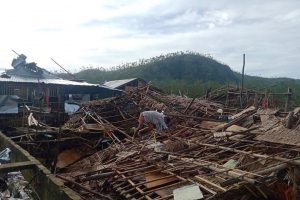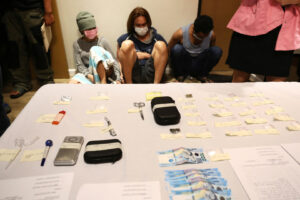More than 50% of target fund for typhoon Odette recovery still needed

MORE than 50% of the target fund for recovery programs in areas hit by typhoon Rai, locally known as Odette, in December is still needed, according to a United Nations official who is leading humanitarian assistance efforts.
“We were challenged, and the number one (reason is) the COVID-19 (coronavirus disease 2019),” UN Resident Coordinator and Humanitarian Coordinator Gustavo Gonzalez said during Wednesday’s ribbon cutting ceremony for an exhibit on the Odette rehabilitation and resilience-building projects.
He cited the need to follow various protocols and “develop the concept of crises within a crisis” to respond effectively to the situation.
Typhoon Odette, the strongest tropical cyclone to hit the Philippines last year, swept through 11 of the country’s 17 regions, affecting close to 12 million people and leaving 2.4 million people in need of assistance.
In February, the Humanitarian Country Team in the Philippines launched a revised Humanitarian Needs and Priorities (HNP) plan to coordinate the response.
The HNP called for a budget of $169 million (about P9.5 billion), which is currently 46% funded, according to a release previously sent by the Spanish Embassy.
Mr. Gonzalez said coordination was crucial in formulating a priority plan as various public and private agencies were involved in the immediate response and rehabilitation initiatives.
He said a major lesson learned from Odette was that “the success of any humanitarian operation relies on readiness — readiness for the nation, and I think that we are building a new model to coordinate amongst ourselves and with the government.”
“In a country like the Philippines, the humanitarian community needs to be very subtle and strategic,” he added, noting that their role is to fill critical gaps.
The Philippines, situated within the typhoon belt, is struck by an average of 20 typhoons per year.
The country has a National Disaster Risk Reduction and Management Council that oversees local plans and teams set up at regional and local government levels.
Mr. Gonzalez thanked the international community, the private sector and other resource persons for the massive response and their valuable contributions during Philippine disaster and resilience cooperation.
“I think I can properly say that there are not many humanitarian coordination efforts in the world as intense and effective as those developed in the Philippines,” Ambassador of Spain to the Philippines Jorge Moragas Sanchez said during the event, citing the efficient leadership, willingness and commitment of all the national, international and national humanitarian institutions.
The support of donors allowed the UN and over 200 humanitarian partners to address the urgent humanitarian needs of typhoon-stricken areas and assist them with early recovery programs through more than 14,600 multi-sectoral activities across 18 clusters.
“Funding is still needed specially to support mid- to long-term recovery activities,” the Spanish Embassy said, noting that several humanitarian agencies are implementing projects which will carry on into the second half of the year.
“Although most of the displaced population have returned, development should be integrated into response and recovery efforts to provide sustainable and long-term solutions for affected communities, including education, economic, and livelihoods support,” it said.
“Long-term and sustained recovery must consider measures to bolster preparedness and build resilience against future shocks,” it added. — Alyssa Nicole O. Tan




